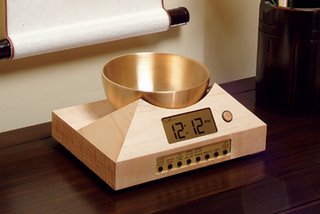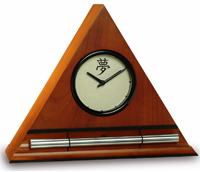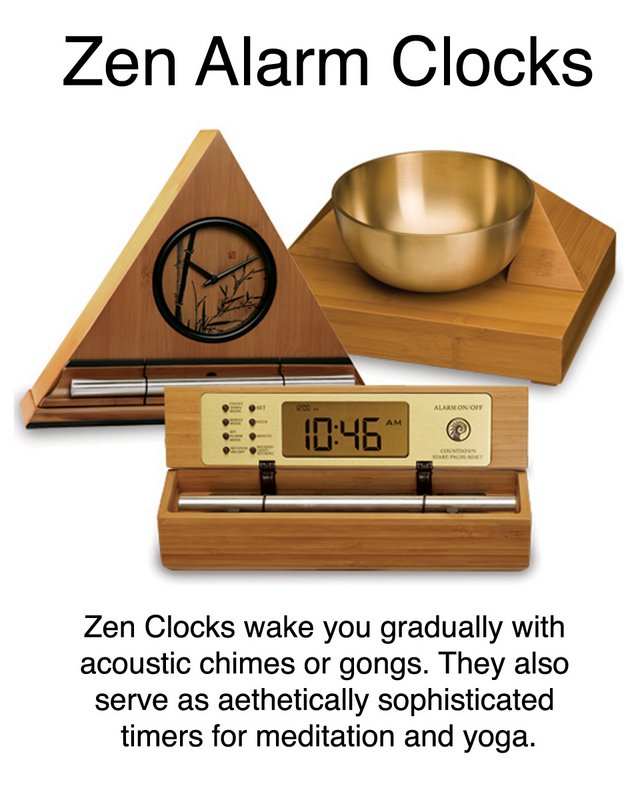|
 Secure Site
Secure Site
|
 |
Archive for the 'mindfulness practice' Category
 Instant Calm You’re cut off while driving. Your children erupt into a screaming fight. Or you’re five minutes away from an interview for the job of your dreams and your composure evaporates in a rush of anxiety. When life delivers adversity, stress is the common response. Your body kicks into action, preparing for a fight. The adrenal glands pump out adrenaline and noradrenaline — hormones that increase the heart rate, quicken breathing, raise blood pressure, and tense muscles. You’re ready to take on the perceived threat to your safety or well-being.
Of course, in reality we rarely run from foes or physically challenge them. As a result, we don’t burn off these powerful hormones, leaving them to “course through our bloodstream,” explains Dr. Herbert Benson, a pioneer in stress research at Harvard Medical School’s Mind/Body Medical Institute. In the short term, a pounding heart and sweaty palms can exacerbate the stressful emotions you’re already feeling. Left unchecked, this chemical mix sets you up for an array of physical and emotional problems, says Benson, including anxiety, depression, and intensified PMS and menopause symptoms.
The next time you are facing a stressful situation, stop yourself from spiraling out of control and bring yourself back to center.
Here is one exercise:
During a stressful event, your thoughts can intensify the storm inside of you. For example, say you’re about to give an important presentation to a large audience. You might find yourself worrying that you’ll get the facts wrong. This kind of worst-case-scenario thinking can increase the rush of stress hormones, worsening your prespeech jitters.
A technique known as “thought-stopping” can help you halt these negative, obsessive thoughts, says Dr. Kenneth Ruggiero, assistant professor in the department of psychiatry and behavioral sciences at the Medical University of South Carolina in Charleston. The first step, he says, is to literally call a halt to this train of thought. If you’re alone, say the word “Stop!” out loud. If you’re around others, think it to yourself. Some people even find it useful to pinch themselves to disrupt those stressful thoughts, says Ruggiero. “This gives you a moment of distraction,” he says, “and an opportunity to change your focus.”
Next, choose a positive thought on which you’ll focus instead, such as “I’ve given presentations before, and they went well” or “I know this material better than anyone in the audience.” In doing so, says Ruggiero, you swap a negative, stress-inducing thought for a positive one.
adapted from Body + Soul Magazine, 2010 by Erin O’Donnell
 Walnut Wood Meditation Timers with Chime Now & Zen – The Zen Alarm Clock Store Headquarters
1638 Pearl Street
Boulder, CO 80302
(800) 779-6383
Posted in intention, mindfulness practice, Well-being
 How to Create Instant Calm A healing art based in traditional Chinese medicine, acupressure involves pressing specific points on your body to release muscle tension and stimulate circulation and the flow of qi, or life energy. Two points on the back of your neck known as the “gates of the mind” can ease stress and clear your mind, says Dr. Michael Reed Gach, founder of the Acupressure Institute in Berkeley, California, and producer of the guided self-care DVD “Acupressure for Stress Relief.” As an added bonus, he adds, pressing these points can stop headaches from developing.
Tilt your head back and place your thumbs at the top of your neck, just below the base of your skull, about three inches apart. Press these spots firmly but gently. “You don’t want to press on the skull, but just underneath it,” Gach says. “If your thumbs are weak or arthritic, use your knuckles instead.” As you press, take three to five slow, deep breaths. Finish by letting your hands float into your lap and your chin drop to your chest. Take an additional deep breath, and briefly scan your body to see how you feel. You can repeat this three times, set your Zen Chime Timer so that it repeats every ten seconds so that you can time your breathing.
adapted from Body + Soul July/August 2006
 wake up alarm clocks with chimes Now & Zen’s Chime Meditation Timer Store
1638 Pearl Street
Boulder, CO 80302
(800) 779-6383
Posted in intention, mindfulness practice, Now & Zen Alarm Clocks, wake up alarm clock, Well-being
Stillness at Start and End of Day
 The best stress remedy is to do nothing, use a chime timer for a gentle reminder If checking your email has become as vital to your wake-up and bedtime routines as brushing your teeth, it’s time to unplug.
“Starting and ending the day in stillness is essential to stress reduction, so it’s absolutely critical not to jump into email during either of those times,” say”
In the morning and at night, turn off your computer (and TV) and pick up a book — or simply delight in the rare pleasure of doing nothing suggests Joan Borysenko, Ph.D., author of “Your Soul’s Compass.
A little nature therapy can also ease the stress of too much computer time. A stroll through a park or on a trail counteracts overstimulation and can also boost your mood and energy.
Our Digital Chime Zen Clock & Timer’s long-resonating Tibetan bell-like chime makes waking up and meditating a beautiful experience – its progressive chimes begin your day with grace.
adapted from Body + Soul Magazine, 2010
 Zen Alarm Clock in Maple Finish, Japanese Leaves Dial Face and Stillness
Now & Zen’s Chime Timer Store
1638 Pearl Street
Boulder, CO 80302
(800) 779-6383
Posted in Chime Alarm Clocks, intention, mindfulness practice
 yogi tea Yogi tea is a hall-of-famer because it’s a timeless classic. The ayurvedic yogi tea (also known as chai) contains aromatic spices to warm and stimulate digestive fire while nourishing body and soul.
1 quart spring or filtered water
1 teaspoon whole black peppercorns
2 teaspoons cardamom seeds (or 3/4 teaspoon ground cardamom)
3-inch cinnamon stick, broken
1/4 teaspoon ground cloves
1-inch piece fresh ginger (or 1 teaspoon ground ginger)
1 teaspoon black tea leaves (may substitute decaffeinated black tea)
1/4 cup nonfat milk, or to taste (may substitute soymilk)
2 tablespoons honey, or to taste (optional)
1. In a medium saucepan, bring the water to a boil over high heat. Set your Zen Timer with Chime for 30 minutes. Add the spices, reduce heat, and simmer for 30 minutes.
2. Set your Zen Timer with Chime for 10 minutes. Add the tea leaves and let steep for 10 minutes. Strain the tea and add milk and honey, if using.
240 calories, 3g fat, 70g carbohydrates, 3.5g protein
adapted from Natural Home Magazine, Nov./Dec. 2005 by Elaine Gavalas
 Bamboo Zen Clocks and Chime Timers, a Natural Sound Timer for Tea Now & Zen’s Alarm Clock and Meditation Timer Shop
1638 Pearl Street
Boulder, CO 80302
(800) 779-6383
Posted in Chime Alarm Clocks, mindfulness practice, Well-being, Zen Timers
 breathing exercises help relieve stress How simple breath work can lead you to a deep state of relaxation.
Beginning students often ask for instructions on the “right” way to breathe. Alas, there’s no single answer to that question, since the optimal breathing pattern at any given moment depends on the type of practice. Restorative yoga focuses solely on relaxation, though, and emphasizes breathing that creates calm and serene states of being. When you settle into restorative poses, try the following techniques for cultivating breathing patterns that are hallmarks of relaxation and well-being.
MOVE THE BELLY WITH THE BREATH. When we are at ease, the diaphragm is the primary engine of the breath. As we inhale, this domelike muscle descends toward the abdomen, displacing the abdominal muscles and gently swelling the belly. As we exhale, the diaphragm releases back toward the heart, enabling the belly to release toward the spine.
KEEP THE UPPER BODY QUIET. During high-stress times, it’s common to heave the upper chest and grip the muscles in the shoulders and throat. When we’re at rest, the muscles of the upper chest remain soft and relaxed as we breathe, and the real work occurs in the lower rib cage. To promote this type of breathing pattern, consciously relax the jaw, throat, neck, and shoulders, and envision the breath sweeping into the deepest parts of the lungs as you breathe in and out.
BREATHE EASY. Although some breaths may be deeper or faster than others, when we’re relaxed, the alternating rhythm of the inhalations and exhalations feels like a lullaby—smooth, soft, and uninterrupted by jerks and jags. Consciously relaxing into this wavelike, oceanic quality of the breath deepens our sense of peace and ease.
LENGTHEN THE EXHALATIONS. When we feel stressed, our exhalations tend to grow short and choppy. When we’re relaxed, though, the exhalations extend so completely that they are often longer than the inhalations. Some teachers even instruct that if we’re deeply relaxed, each exhalation will be twice as long as the inhalation. To facilitate this, try gently extending each exhalation by one or two seconds. Set your Bamboo Meditation Timer with Chime for 20 minutes and continue this exercise.
PAUSE AFTER EACH EXHALATION. In our most relaxed state, the end of each exhalation is punctuated by a short pause. Lingering in this sweet spot can be deeply satisfying and can evoke feelings of profound quiet and stillness.
LET THE WHOLE BODY BREATHE. When we are at ease, the whole body participates in the breathing process. Imagine a sleeping baby: When he breathes in and out, the belly swells and releases, the hips rock to and fro, the shoulders bob, and the spine gently undulates. This offers a mini-massage for the muscles and organs of the whole body, and turns each breath into a soothing melody that further calms and quiets every cell within.
adapted from Yoga Journal Magazine, by Claudia Cummins
Our Chime Meditation Clock & Timer’s long-resonating Tibetan bell-like chime makes waking up and meditation a beautiful experience – its progressive chimes begin your day with grace.
The Chime Meditation Clock & Timer serves as a countdown and interval timer for yoga, meditation, bodywork, etc.; and it can also be set to chime on the hour as a tool for “mindfulness.”
 Bamboo Meditation Timers with Soothing Chimes for Breathe Work Now & Zen’s Chime Timer and Alarm Clock Shop
1638 Pearl Street
Boulder, CO
(800) 779-6383
Posted in Meditation Timers, Meditation Tools, mindfulness practice, Well-being, yoga, Yoga Timer, Yoga Timers by Now & Zen, Zen Timers
 A Stillness Practice for before Bedtime Tailgaters. Telemarketers. Teenagers. When you can sum up your day that way, it’s easy to respond with a few choice words of your own. Yet losing your cool rarely feels good or reflects your best character. To maintain your center and stay true to yourself, try this technique from David Simon, M.D., medical director and co-founder of the Chopra Center for Well-Being in Carlsbad, Calif.
Every night before bed, take a few minutes to mentally replay your day. This simple process gives you a different perspective on your actions, along with the opportunity to right any wrongs.
* Set your Zen Timer with Chime for 5 to 10 minutes. Sit up in bed with a pillow propped behind you; bend your knees or cross your legs comfortably on the bed.
* Close your eyes and take a few slow, deep breaths. Observing the in-and-out flow of your breath, allow your body to relax and your mind to quiet.
* Let the day’s events unfold. Picture each one from the time you awoke to the present.
* Notice if your body reacts negatively during any part of the process. A churning in your gut or a nervous response may signal something unresolved.
* Reflect on this particular event and ask yourself if you acted correctly. If anything feels unsettled, note it in a journal with the intention of addressing it the next day.
Revisiting unresolved issues offers you a second chance to do the right thing, Simon says. Maybe a disparaging remark was said about someone you like and respect, but you didn’t speak up at the time. Now you can tell the person who made the remark why such talk makes you uncomfortable.
Over time, annoyances like traffic jams will seem less significant and stressful. “You’ll be able to stay centered and balanced as you encounter the ups and downs of life,” Simon observes. Even better, this nightly evaluation will make you more aware of your goals and how they relate to day-to-day activities. “It will help you honor the person you want to be in the world,” he says.
adapted from Natural Health Magazine by Sarah D. Smith
The Zen Timer & Alarm Clock with Chime serves as a countdown and interval timer for yoga, meditation, bodywork, etc.; and it can also be set to chime on the hour as a tool for “mindfulness.”
 Natural Wood Chime Zen Timers and Alarm Clocks Now & Zen’s Chime Alarm Clock Shop
1638 Pearl Street
Boulder, CO 80302
(800) 779-6386
Posted in intention, Meditation Timers, Meditation Tools, mindfulness practice, sleep, Well-being, Zen Timers
 Meditation is a Quick Fix for Stress Meditating for just 20 minutes a day for five days helped to increase energy and decrease anxiety and stress, as measured by levels of stress hormones, a small study found.
Using the so-called integrative body-mind training method, which comes from traditional Chinese medicine, the study participants reported better attention and control of stress than those relying on relaxation training, which is popular in the West.
Although derived from Chinese medicine, integrative body-mind training uses aspects of other meditation and mindfulness training, the study authors said.
“A meditation method developed in China showed remarkably better performance among those who went through the training compared with those who used relaxation training,” said lead researcher Michael Posner, a psychology professor at the University of Oregon’s Institute of Cognitive and Decision Sciences.
In the study, published in this week’s issue of the Proceedings of the National Academy of Sciences, the researchers assigned 40 undergraduate students from China to either integrative meditation or relaxation therapy.
 Meditation Posner’s group found the students who used integrative meditation for 20 minutes a day for just five days showed greater improvement in conflict scores on a test of stress levels, lower anxiety, depression and anger. Conversely, they displayed more energy, less fatigue, a significant drop in levels of the stress hormone cortisol, and an increase in immunoreactivity, compared with students receiving the relaxation therapy.
Integrative body-mind training was developed in the 1990s, and has been studied in China since 1995. Based on the results from hundreds of adults and children ranging from 4 to 90 years old in China, the practice appears to improve emotional and cognitive performance and social behavior, the study authors said.
Because the study was done in China, Posner said he’s not sure if the same meditation method would work in the United States.
“This is a kind of scientific demonstration about the possible advantage of meditation, at least for the Chinese undergraduates,” Posner said. “It could be culturally specific.”
Posner does think, however, that the study shows it’s possible to change the levels of stress hormones with training.
More information
To learn more about meditation, visit the U.S. National Center for Complementary and Alternative Medicine.
 Once you experience the Zen Timepiece's progressive tones, you'll never want to meditate any other way. It serves as the perfect meditation timer. Now & Zen – The Gong Meditation Timer Shop
1638 Pearl Street
Boulder, CO 80302
(800) 779-6383
Posted in Meditation Timers, Meditation Tools, mindfulness practice
 Exercise May Sharpen Your Brain Even if you start late in life, physical activity can help preserve mental ability, study finds
Older adults who keep active may be helping to reduce their odds of losing their mental abilities, two new studies suggest.
Both reports were published online July 19 in the Archives of Internal Medicine, to coincide with presentations scheduled to be presented Tuesday at the International Conference on Alzheimer’s Disease in Paris.
“We looked at an objective measure of physical activity — most previous studies looked at self-reported levels of physical activity, which always has some inherent error,” said the lead researcher of the first study, Laura E. Middleton, from the Heart and Stroke Foundation Center for Stroke Recovery at the Sunnybrook Research Institute in Toronto.
Using this measure, the researchers found that those who were the most physically active had a 90 percent lower risk of developing significant cognitive decline, compared with those who had the least physical activity, she said.
“This suggests, because this method is able to capture all types of physical activity, that low-intensity physical activity may be important,” Middleton said. “So not just jogging, swimming or biking, but maybe just moving around the house, doing chores, walking outside, may also be important for protection against cognitive impairment.”
 Exercise May Sharpen Your Brain “We shouldn’t just be encouraging people to exercise, we should discourage them from being sedentary,” she added.
For the study, Middleton’s team collected data on 197 men and women who took part in the ongoing Health, Aging and Body Composition study. The participants had an average age of 74 when they started the study and none had any cognitive difficulties, the researchers noted.
To determine the effects of activity on mental ability, the researchers measured the total amount of energy the participants used. To do this, they used a method called “doubly labeled water,” which shows how much water a person loses, which is an objective measure of a persons metabolic activity.
Over two to five years of follow-up, Middleton’s group found that those with the highest levels of physical activity had the lowest odds of developing any cognitive impairment, compared with those who had the least amount of physical activity.
These findings were confirmed by having participants take the Modified Mini-Mental State Examination. The researchers also took factors such as Modified Mini-Mental State Examination scores at the start of the study, demographic factors, body mass, sleep, self-reported health and diabetes.
Middleton noted that while these findings cannot be said to be causal, but it “is an association between physical activity and cognitive change.”
In the second study, a team led by Marie-Noel Vercambre, from the Foundation of Public Health, Mutuelle Generale de l’Education Nationale in Paris, looked at the effect of physical activity among women who were part of the Women’s Antioxidant Cardiovascular Study, which included women with vascular disease or three or more risk factors for heart disease.
Vercambre’s group determined the level of physical activity among 2,809 women at the start of the study and every two years thereafter. In addition they conducted phone interviews with the women that included tests of mental ability and memory. These tests were given at the start of the study and three or more times over the next 5.4 years.
 Expert yoga pose The researchers found that women who were most physically active had the lowest rate of developing cognitive decline. In addition, women who took a brisk 30-minute walk every day, or its equivalent, had the lower risk of cognitive impairment.
Dr. Eric B. Larson, from the Group Health Research Institute in Seattle and author of an accompanying journal editorial, commented that the association between physical activity and mental ability probably had to do with overall vascular health.
“As we get older, our brains are probable less able to withstand stress,” he said. But exercise improves vascular health, he added.
Larson thinks the benefits of exercise on mental ability can accrue even if one starts exercising later in life. “There may be even more benefit, because your state is more risky,” he said. “Just keeping up walking for an older person is a huge benefit.”
Even after dementia has started, exercise can be a benefit, Larson said. “Walking once, twice or four times a week with a caregiver leads to a better outcome and a happier person,” he said.
More information
For more on dementia, visit the U.S. National Library of Medicine.
SOURCES: Laura E. Middleton, Ph.D., Heart and Stroke Foundation Center for Stroke Recovery, Sunnybrook Research Institute, Toronto; Eric B. Larson, M.D., M.P.H., Group Health Research Institute, Seattle; July 19, 2011, Archives of Internal Medicine, online
 Calming Chime Alarm Clock for a Gentle Awakening Now & Zen – The Chime Alarm Clock Shop
1638 Pearl Street
Boulder, CO 80302
(800) 779-6383
Posted in mindfulness practice
 Meditation and Yoga Researchers say they’ve taken a significant stride forward in understanding how relaxation techniques such as meditation, prayer and yoga improve health: by changing patterns of gene activity that affect how the body responds to stress.
The changes were seen both in long-term practitioners and in newer recruits, the scientists said.
“It’s not all in your head,” said Dr. Herbert Benson, president emeritus of the Benson-Henry Institute for Mind/Body Medicine at Massachusetts General Hospital and an associate professor of medicine at Harvard Medical School. “What we have found is that when you evoke the relaxation response, the very genes that are turned on or off by stress are turned the other way. The mind can actively turn on and turn off genes. The mind is not separated from the body.”
One outside expert agreed.
“It’s sort of like reverse thinking: If you can wreak havoc on yourself with lifestyle choices, for example, [in a way that] causes expression of latent genetic manifestations in the negative, then the reverse should hold true,” said Dr. Gerry Leisman, director of the F.R. Carrick Institute for Clinical Ergonomics, Rehabilitation and Applied Neuroscience at Leeds Metropolitan University in the U.K.
“Biology is not entirely our destiny, so while there are things that give us risk factors, there’s a lot of ‘wiggle’ in this,” added Leisman, who is also a professor at the University of Haifa in Israel. “This paper is pointing that there is a technique that allows us to play with the wiggle.”
 Meditation and Yoga Reduce Stress Benson, a pioneer in the field of mind-body medicine, is co-senior author of the new study, which is published in the journal PLoS One.
Benson first described the relaxation response 35 years ago. Mind-body approaches that elicit the response include meditation, repetitive prayer, yoga, tai chi, breathing exercises, progressive muscle relaxation, biofeedback, guided imagery and Qi Gong.
“Previously, we had noted that there were scores of diseases that could be treated by eliciting the relaxation response — everything from different kinds of pain, infertility, rheumatoid arthritis, insomnia,” Benson said.
He believes that this study is the first comprehensive look at how mind states can affect gene expression. It also focuses on gene activity in healthy individuals.
Benson and his colleagues compared gene-expression patterns in 19 long-term practitioners, 19 healthy controls and 20 newcomers who underwent eight weeks of relaxation-response training.
More than 2,200 genes were activated differently in the long-time practitioners relative to the controls and 1,561 genes in the short-timers compared to the long-time practitioners. Some 433 of the differently activated genes were shared among short-term and long-term practitioners.
Further genetic analysis revealed changes in cellular metabolism, response to oxidative stress and other processes in both short- and long-term practitioners. All of these processes may contribute to cellular damage stemming from chronic stress.
Another expert had a mixed response to the findings.
Robert Schwartz, director of the Texas A&M Health Science Center’s Institute of Biosciences and Technology in Houston, noted that the study was relatively small. He also wished that there had been more data on the levels of stress hormones within the control group, for comparison purposes.
However, Schwartz called the study “unique and very exciting. It demonstrates that all these techniques of relaxation response have a biofeedback mechanism that alters gene expression.”
He pointed out that the researchers looked at blood cells, which consist largely of immune cells. “You’re getting the response most probably in the immune cell population,” Schwartz said.
“We all are under stress and have many manifestations of that stress,” Benson added. “To adequately protect ourselves against stress, we should use an approach and a technique that we believe evokes the relaxation response 20 minutes, once a day.”
Use our unique “Zen Clock” which functions as a Yoga & Meditation Timer. It features a long-resonating acoustic chime that brings your meditation or yoga session to a gradual close, preserving the environment of stillness while also acting as an effective time signal. Our Yoga Timer & Clock can be programmed to chime at the end of the meditation or yoga session or periodically throughout the session as a kind of sonic yantra. The beauty and functionality of the Zen Clock/Timer makes it a meditation tool that can actually help you “make time” for meditation in your life. Bring yourself back to balance.
There’s more on meditation at the U.S. National Center for Complementary and Alternative Medicine.
 Yoga and Meditation Timers with Chime Now & Zen – The Yoga and Meditation Timer Shop
1638 Pearl Street
Boulder, CO 80302
(800) 779-6383
Posted in Meditation Timers, Meditation Tools, mindfulness practice
 What is a Listening Meditation? Listening Meditation
What is it?
While many meditation techniques require solitude and silence, this one has you engage with sounds all around you; it invites you to work with the noise instead of fighting it. The intent is to experience sound as vibration, rather than information. “The listening practice is a way of interacting with the environment that allows you to take in the whole energy of the present moment,” says Sally Kempton, a spiritual guide who teaches yoga and meditation at her Carmel, Calif.- based Awakened Heart Meditation (sallykempton.com).
 What is a Listening Meditation Good For? What’s it good for?
Especially adaptable and portable, listening meditation can be practiced in crowded, noisy situations—on a bus, at the office—that would hinder other styles. (Kempton once led a listening meditation workshop in the middle of a busy Whole Foods store!) People with particularly chattering minds may need to couple this practice with a mantra or breathing meditation. However, many people welcome the chance to focus outward rather than inward and find that listening meditation is one of the easier techniques to undertake. “You’ll come away from it feeling refreshed, expanded and at ease with your environment,” declares Kempton.
How long does it take?
Try for five minutes at first, then continue adding a minute or two until you can do it for 15 or 20 minutes at a time.
How do I do it?
1. Sit in a comfortable position and close (or half close) your eyes.
2. To get centered and quiet, first go to your breath, noticing but not trying to change it.
3. Now “open” your ears and bring your awareness to the sounds around you. The goal is to listen to the whole range of sounds, without favoring one and without identifying them. Hear the quiet sounds and the silences as well as the dominant sounds.
4. When you find yourself identifying sounds (“there’s a fire engine”; “that’s my neighbor’s TV”), gently redirect your attention from listening to a specific noise back to hearing the whole spectrum of sounds.
5. To end, slowly open your eyes, stand and carry this awareness with you for as long as you can.
adapted from naturalhealthmag.com By Frances Lefkowitz
 Gong Meditation Timers for a Listening Meditation Now & Zen – The Gong Meditation Timer Shop
1638 Pearl Street
Boulder, CO 80302
(800) 779-6383
Posted in Meditation Timers, Meditation Tools, mindfulness practice
« Previous Page — « Previous Entries
Next Entries » — Next Page »
|
|
|
|